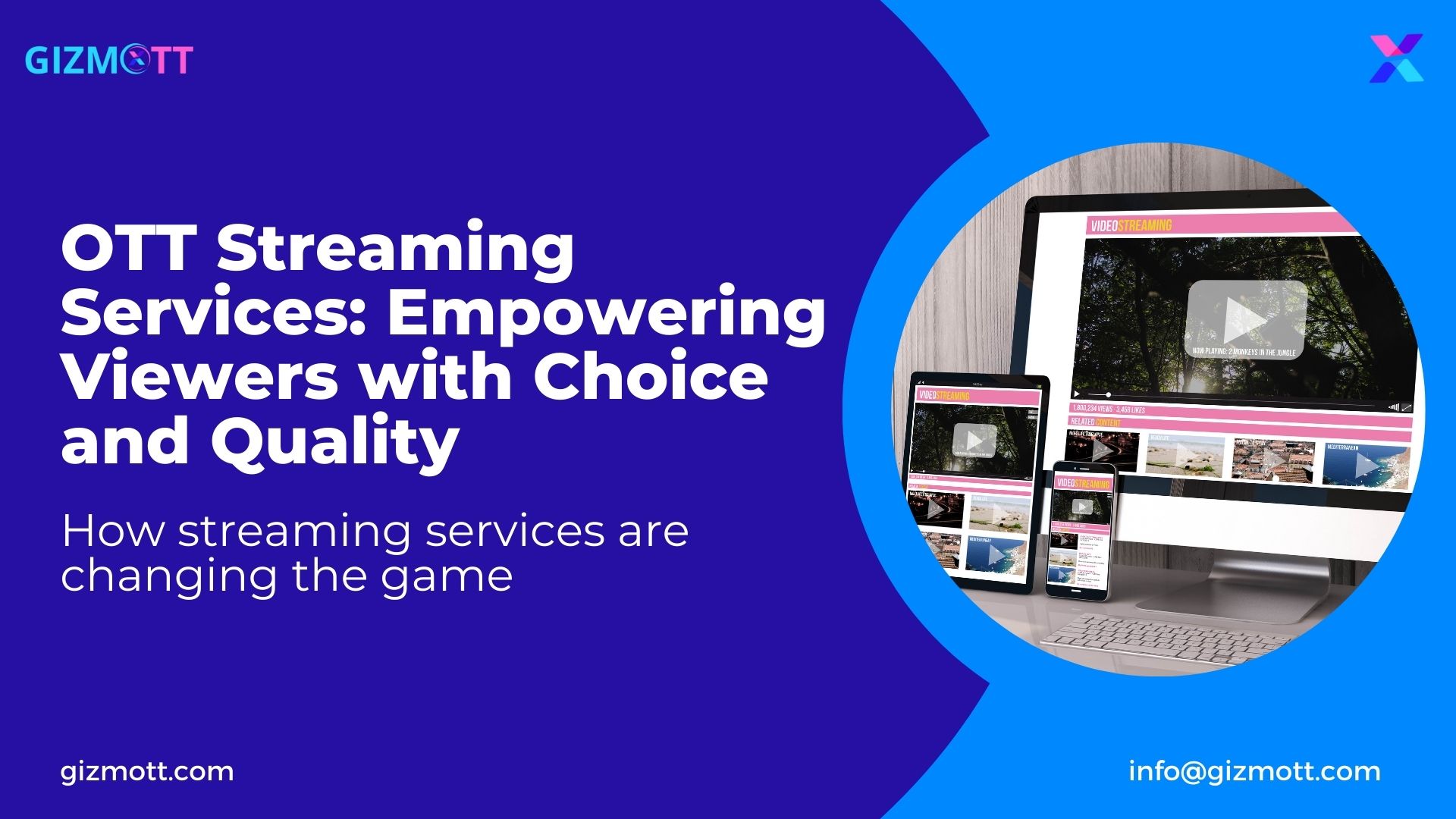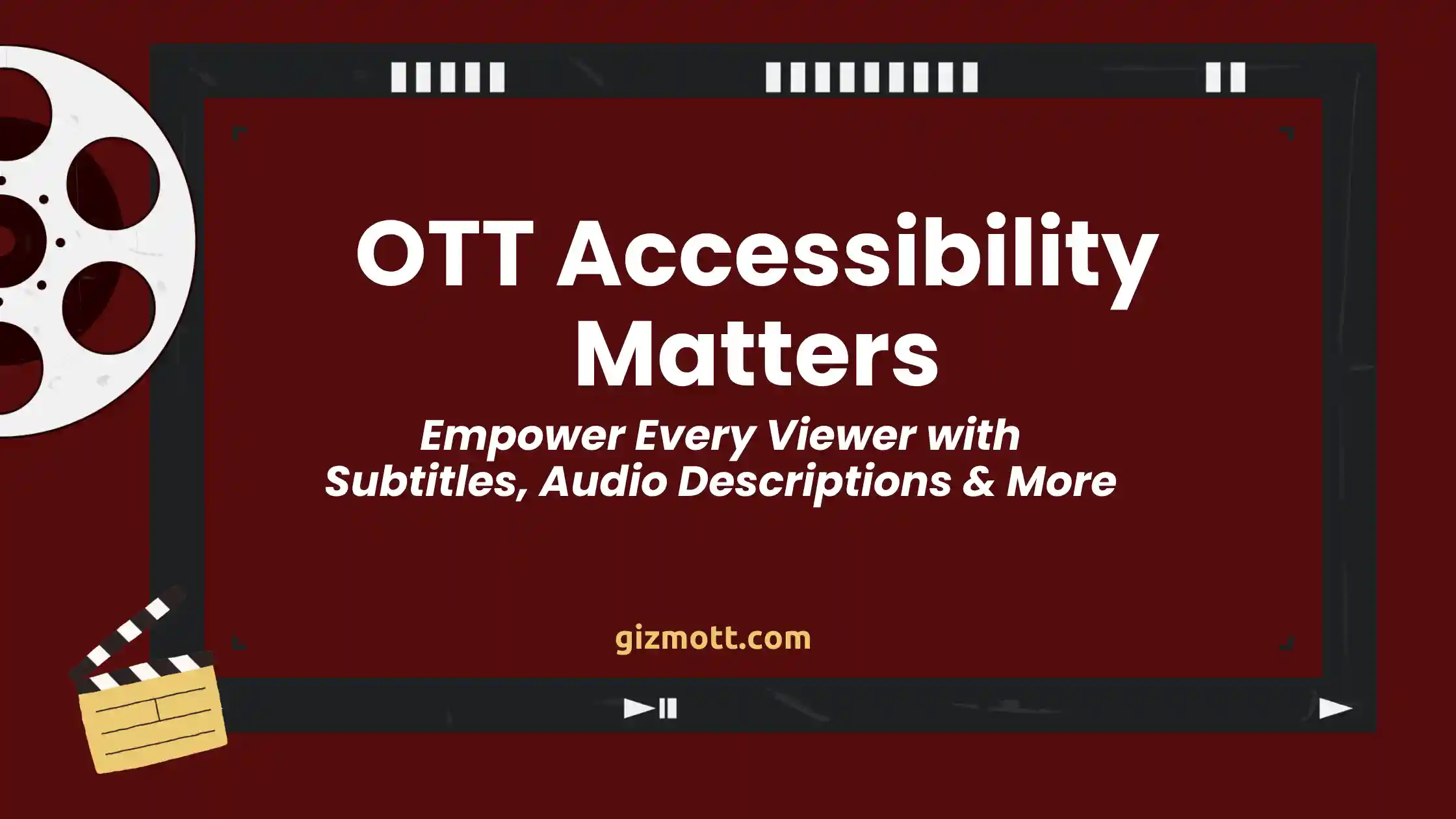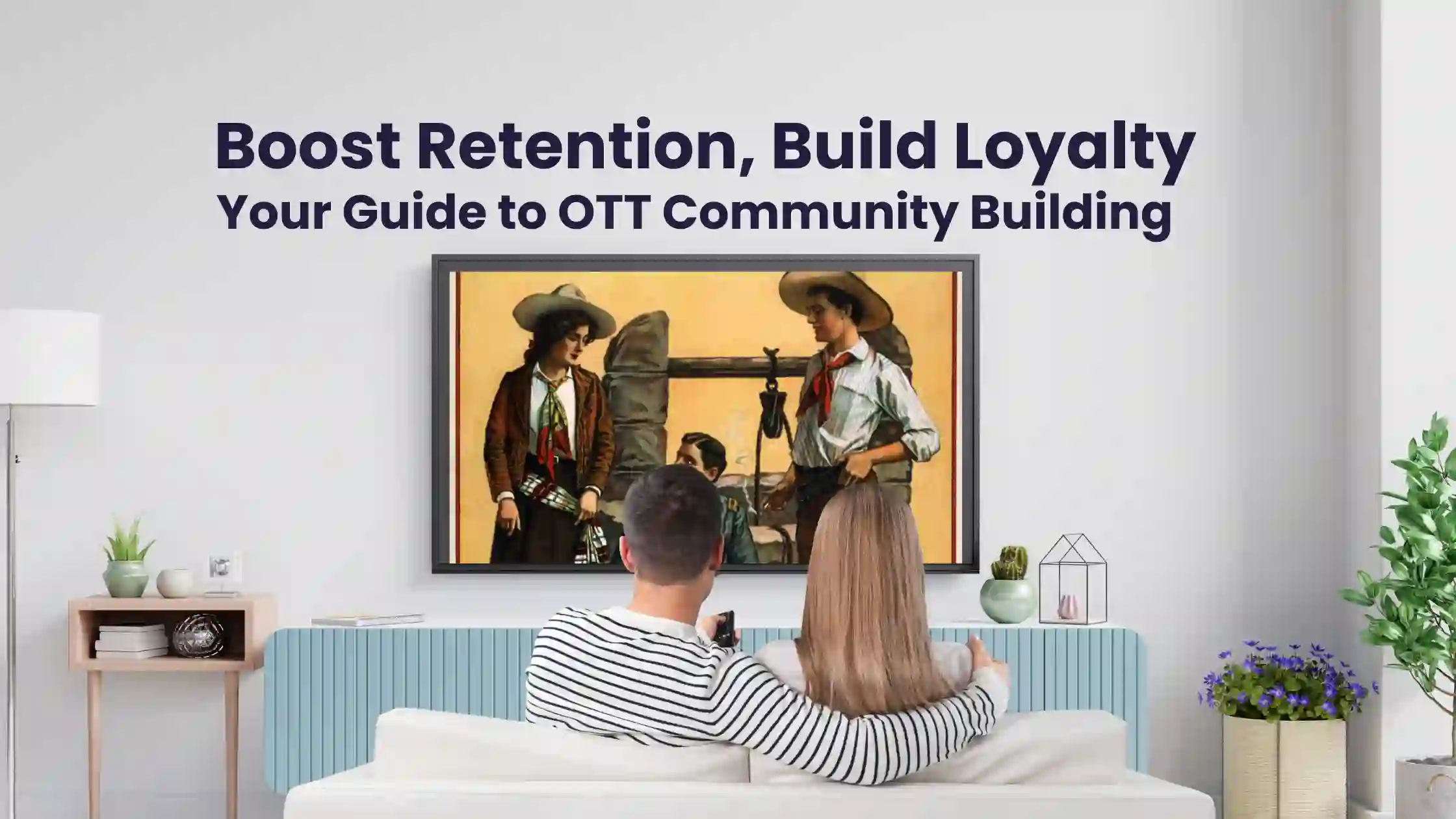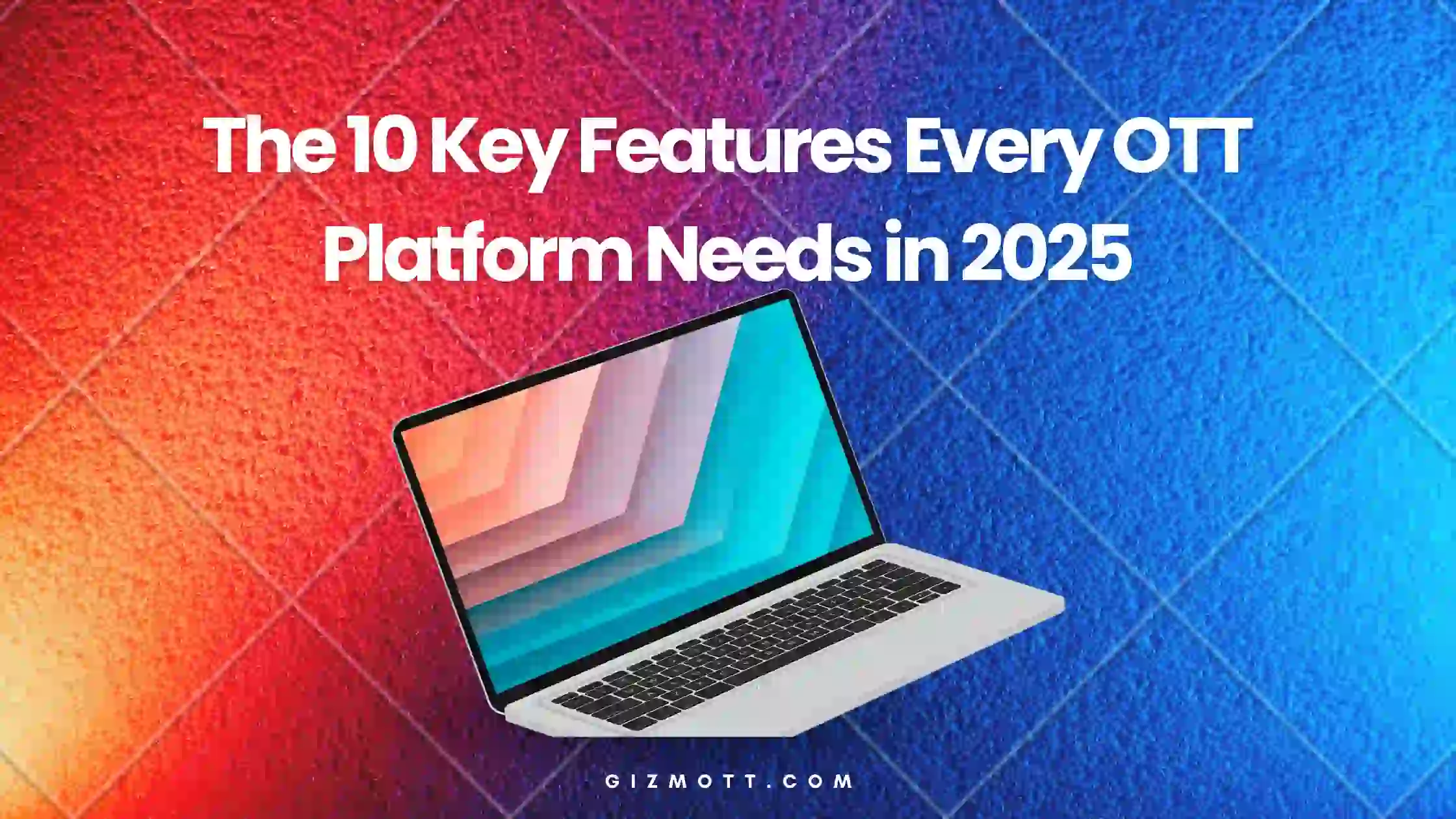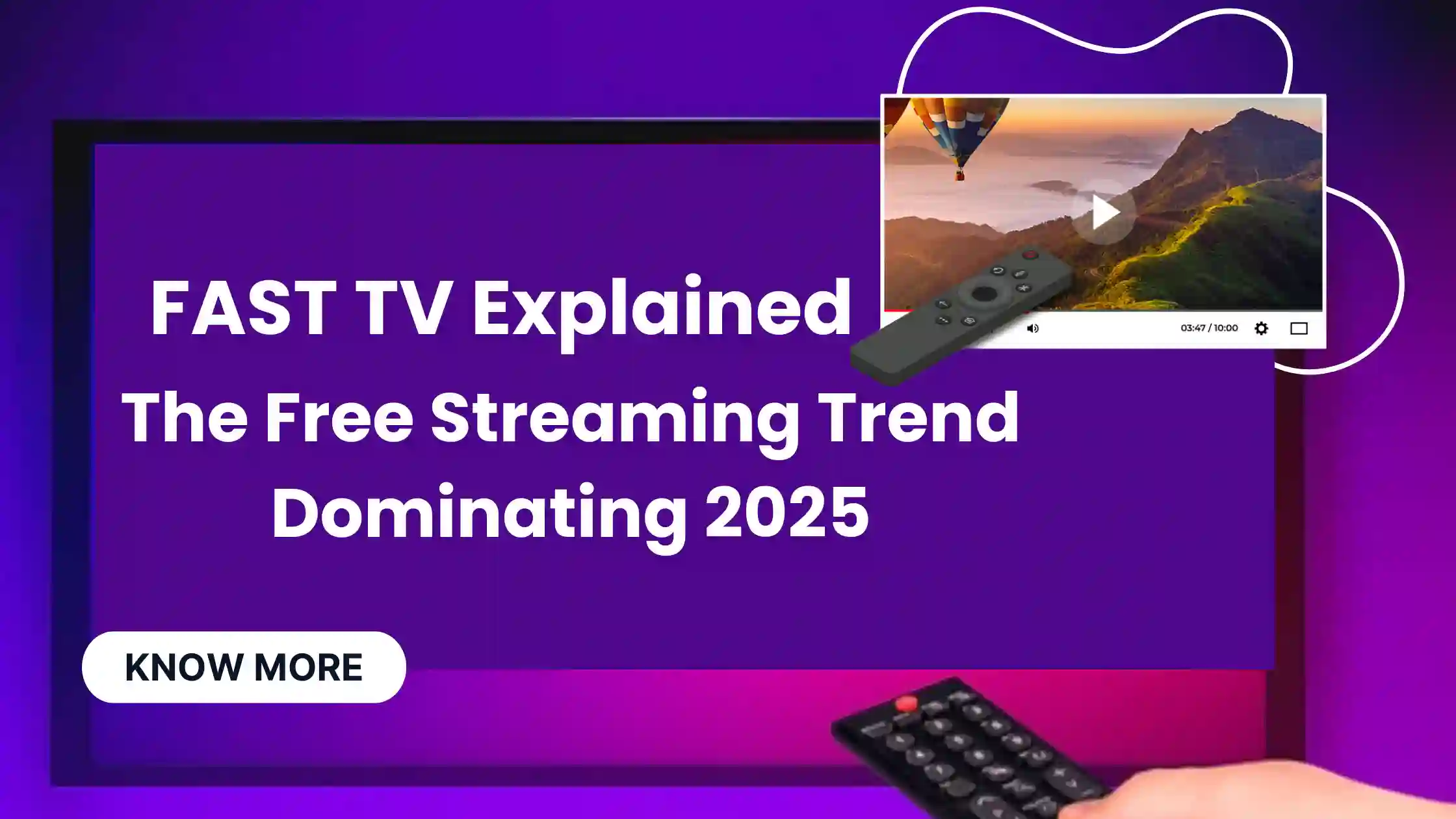What is OTT?
Over-the-top (OTT) streaming refers to the delivery of video content through over-the-top platforms or services. OTT platforms bypass traditional distribution methods like cable or satellite television, delivering content directly to viewers over the internet. Examples of OTT streaming services include Netflix, Amazon Prime Video, Disney+, and Hulu.
OTT streaming platforms typically offer a curated library of movies, TV series, documentaries, and original content. They often require a subscription fee, providing subscribers with unlimited access to a wide range of high-quality content. OTT services differentiate themselves by producing exclusive shows and movies, investing in original programming to attract and retain subscribers.
The content available on OTT platforms is often longer in duration compared to video streaming, with full-length movies and multi-episode TV series being the norm. The focus is on providing a premium and immersive viewing experience, with high-definition or even 4K and HDR content available. OTT platforms emphasize quality and production value, often rivaling traditional television networks and studios.
OTT streaming also offers a more personalized and tailored experience. Platforms leverage algorithms and user data to suggest content based on individual preferences, watching history, and recommendations from friends or critics. They often provide features like multiple user profiles, offline downloads, and cross-platform synchronization to enhance convenience and accessibility.
How OTT is Delivered?
Dedicated OTT Apps: OTT streaming platforms typically provide dedicated applications or apps that can be installed on various devices such as smartphones, tablets, smart TVs, gaming consoles, and streaming devices like Roku, Apple TV, or Chromecast. These apps serve as the gateway for users to access the content library, browse and select shows or movies, and stream them directly on their chosen device.
Web-Based Streaming: Many OTT platforms also offer web-based streaming, allowing users to access and stream content directly through a web browser on their computers or laptops. Users can visit the platform’s website, log in with their account credentials, and stream the desired content without the need for a dedicated app.
Smart TVs and Connected Devices: Smart TVs come equipped with built-in streaming capabilities, enabling users to access OTT services directly through their television sets. Additionally, various connected devices, such as streaming media players or set-top boxes, can be connected to regular TVs, providing them with smart capabilities. These devices often have pre-installed OTT streaming apps or offer the ability to download and install them, allowing users to stream content on their TVs.
Mobile Devices and Tablets: OTT platforms offer apps specifically designed for mobile devices, such as smartphones and tablets. Users can download these apps from app stores like Google Play Store (for Android) or the Apple App Store (for iOS). Once installed, users can log in to their accounts and stream content directly on their mobile devices, making it convenient to watch on the go.
How Do Over The Top Media Services Work?
Over-the-top (OTT) media services work by delivering audio, video, and other forms of media content directly to viewers over the internet, bypassing traditional distribution channels such as cable or satellite television. Here’s a breakdown of how OTT media services work:
Content Acquisition and Licensing: OTT service providers acquire content through various means, including licensing agreements with production studios, distributors, and independent content creators. They may also invest in original content production, creating exclusive shows and movies to differentiate their offerings. Content can range from movies, TV series, documentaries, live sports events, news, music, and more.
Content Encoding and Storage: Once the content is acquired, it undergoes encoding and compression processes. This prepares the media files for efficient delivery over the internet. The encoded files are then stored in robust servers or cloud-based storage systems that can handle large volumes of data and ensure fast and reliable access.
Content Management and Delivery: OTT service providers manage the content in their libraries, organizing it into categories, genres, and playlists. They also employ metadata tagging to facilitate search and recommendation functionalities. When a user selects a specific title or requests a certain category of content, the OTT platform’s backend systems retrieve the corresponding media file from the storage and deliver it to the user’s device in real-time.
User Authentication and Account Management: OTT platforms require users to create accounts and log in to access the content. This authentication process helps ensure that only authorized users can stream the content. User accounts also facilitate personalized features such as customized recommendations, watchlists, and user preferences. OTT service providers may offer different subscription plans with varying levels of access and benefits.
Content Delivery Networks (CDNs): OTT platforms rely on Content Delivery Networks (CDNs) to efficiently distribute the media content to viewers. CDNs are geographically distributed networks of servers strategically located around the world. When a user requests to stream a specific video, the CDN determines the closest server to the user and delivers the content from that server. This minimizes latency and ensures smooth playback, even during high-demand periods.
Adaptive Streaming Technology: OTT platforms employ adaptive streaming technologies to optimize the viewing experience. These technologies dynamically adjust the quality of the video stream based on the user’s internet connection speed and device capabilities. It ensures that users receive the best possible playback quality while minimizing buffering or interruptions.
Monetization Models: OTT platforms generate revenue through various monetization models. Subscription-based models, such as monthly or annual subscriptions, provide unlimited access to the content library in exchange for a recurring fee. Some OTT platforms also offer ad-supported models, where users can access content for free but encounter advertisements during playback. Additionally, pay-per-view or transactional models allow users to rent or purchase specific content on-demand.
User Experience and Interfaces: OTT platforms prioritize user experience and provide user-friendly interfaces across devices. They offer features like personalized recommendations, search functionality, user profiles, bookmarking, and the ability to create watchlists. OTT platforms may also support features like offline downloads, cross-platform synchronization, and social sharing to enhance the overall user experience.
By leveraging internet connectivity, OTT media services enable viewers to access a wide range of content conveniently and on-demand. They have revolutionized the way people consume media, offering flexibility, personalization, and a diverse selection of entertainment options.
Why is OTT Better Than YouTube?
First, OTT platforms prioritize premium content, offering professionally produced shows and movies, including exclusive originals. This focus on high-quality content provides a curated and immersive viewing experience, rivaling traditional television networks. In contrast, YouTube predominantly consists of user-generated content, which can vary significantly in terms of production value and consistency.
Second, OTT platforms often offer an ad-free experience to subscribers who pay a subscription fee. This means viewers can enjoy uninterrupted streaming of their favorite shows and movies, enhancing the overall viewing experience. In contrast, YouTube primarily relies on ad-supported monetization, which can disrupt the flow of content with pre-roll, mid-roll, and display ads. The absence of ads on OTT platforms allows users to engage with the content seamlessly, without any interruptions.
What is the Difference Between Gizmott and Other OTT Platforms?
Some of the features that differentiate Gizmott from other OTT platforms are:
Cost and pricing: Gizmott has a low upfront cost and usage-based monthly pricing that makes it affordable and flexible for content creators.
Device compatibility: Gizmott supports all popular devices including iOS & Android mobiles, Amazon Fire TV, Roku, LG, Samsung, Apple TV, Android TV and Web. This ensures that content creators can reach a wide audience across different platforms and devices.
Ad monetization: Gizmott has a built-in SSP and Ad Server that ensures a higher fill rate and CPM rates for ad monetization. Content creators can earn revenue from ads that are relevant and targeted to their audience.
Subscription management: Gizmott has an extensive SVOD, AVOD, TVOD and Hybrid feature that gives the flexibility to manage subscription plans. Content creators can offer different plans and prices to their viewers based on their preferences and needs.
Linear broadcasting: Gizmott has a capable Linear Broadcasting Solution that allows content creators to schedule their own linear TV-style broadcast channels. Content creators can create their own programming and schedule for their channels and cast them to web, mobile, OTT or even to cable and satellite.
Third-party distribution: Gizmott has a third-party distribution feature that helps content creators to distribute their content to vMVPDs to reach maximum audience and generate higher revenue. Content creators can leverage the existing user base and infrastructure of vMVPDs to expand their market and audience.
Live commerce: Gizmott incorporates a live commerce platform, Flixbuy, that enables content creators to launch live commerce in e-commerce stores with influencer live streams, shoppable videos, and shoppable ads. Content creators can sell products or services directly to their viewers through interactive and engaging live streams or videos.
How Gizmott Serves Brand and Creators
OTT platforms, such as those powered by Gizmott, are revolutionizing the digital landscape for content creators, brands, and organizations, particularly those focused on video content. In the past, creators had to depend on third-party networks like YouTube to reach a wide audience. However, with an OTT platform, they can bypass intermediaries and establish their own dedicated content hub.
By leveraging an OTT platform, creators gain greater control over their content, including decisions related to distribution and pricing. They have the freedom to curate their content library and tailor the platform’s look and feel to align with their brand identity. This level of control empowers content creators to deliver their content in a manner that best represents their vision and resonates with their target audience. With the ability to create a standalone content hub, they can build a loyal and engaged viewer base while maintaining autonomy over their creative work.
In summary, Gizmott serves as a versatile platform that meets the unique requirements of various content creators, communities, musicians, film festivals, faith organizations, enterprises, and associations. It empowers them to establish their own video platforms, connect with their audiences, and achieve their specific goals in an environment that reflects their brand and values.
Gizmott’s outlook for the OTT industry
By having your own OTT platform, you have the opportunity to establish a unique identity and take full control of your content. You can build channels featuring relevant content that resonates with your audience, whether it’s videos, live streaming events, or other forms of media.
The power to shape your platform according to your vision allows you to create an immersive and personalized experience for your viewers.
One of the key benefits of having your own OTT platform is the ability to drive revenue through various monetization strategies. You can offer subscriptions to provide exclusive access to premium content, seek sponsorships to generate additional income, and explore other revenue streams to support your creative endeavors.
With the world of OTT at your fingertips, you have the freedom to shape your content strategy and explore new opportunities to thrive in the digital landscape.
We at Gizmott are thrilled to be a part of your journey into the world of OTT. Our platform empowers you to seize the reins, deliver your content to a global audience, and establish your brand in the ever-expanding realm of online media. Together, we can unlock the full potential of your content and create an engaging and prosperous OTT experience for you and your viewers.
